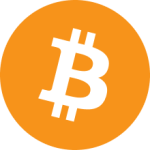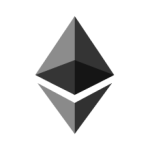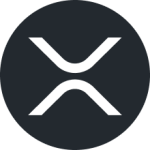Digital Asset Tokenisation: The Latest Developments
July 27, 2023
While the mainstream acceptance of cryptocurrency has been performing strongly underneath a cloud of regulatory issues, a fascinating blockchain application, known as tokenisation, has been steadily gaining traction. Tokenisation enables the representation of physical assets such as gold and other financial products in the form of digital tokens, offering proof of ownership.
Tokenisation not only paves the way for quicker transactions and substantial cost reductions on administrative duties but also offers new investment opportunities. Thanks to fractional ownership, potential investors can afford smaller shares of tokenised assets. This, in turn, could create more fluid and transparent markets for assets like intellectual property rights, real estate, and private company equity and debt.
Significant financial institutions like Franklin Templeton and WisdomTree have already exploited this technology, tokenising over $300 million in digital funds on the Stellar blockchain. Earlier, Goldman Sachs launched a private blockchain and issued bonds for the Hong Kong Monetary Authority and the European Investment Bank. JP Morgan processed an impressive $700 billion on its Onyx digital assets platform, which uses a permissioned version of the Ethereum blockchain. On the same note, BNY Mellon is also in the process of initiating tokenisation, with their survey indicating that 91% of institutional investors have shown interest in tokenised assets.
Moreover, ADDX, the largest private market exchange in Asia, is already using smart contracts to tokenise and fractionalise a variety of financial instruments, including bonds and private equity securities. Chile’s Central Securities Depository is also upgrading its systems to Nasdaq’s CSD platform in anticipation of tokenising assets.
Closer to home, we have our own offerings in the world of tokenisation – Gold Standard (AUS) and Silver Standard (AGS). Both these tokens represent a significant advancement in merging the precious metals industry with blockchain technology, truly a testament to the transformative potential of digital assets.
Boston Consulting Group estimates a $16 trillion global market for tokenised real-world assets by 2030. Bank of America’s research indicates that the tokenised gold market has already surpassed $1 billion, suggesting that tokenisation could radically alter financial markets in five to fifteen years.
Bridging the Gap Between Traditional Banking and Cryptocurrencies: The SWIFT-ChainLink Collaboration
While there are countless enthusiasts who view crypto as a replacement for traditional banking, many banks have recognised the potential benefits of incorporating crypto into their operations. A recent instance of this is the collaboration between SWIFT, the globally accepted messaging network for financial institutions, and ChainLink, a leading oracle chain.
July 17 marked the beginning of ChainLink’s Cross-Chain Interoperability Protocol (CCIP), which aims to connect virtually all major banks and blockchains. This development is poised to revolutionise the transfer of tokenised assets across various blockchains, including Ethereum, Avalanche, and Polygon. Notably, SWIFT plans to utilise this protocol to interface with various blockchains and bank participants, such as BNY Mellon and Citi. This initiative follows the successful trial run of transferring tokenised assets between banks using private blockchains in 2022.
If SWIFT can tap into the potential of blockchain technology, it can maintain its position as the global standard for financial communications, while also contributing to the exponential growth of the blockchain industry.
The European Union’s Vision for the Metaverse
The EU has been a global frontrunner in forming a multi-national crypto framework with MiCA. Now, it is striving to lead the way in shaping the metaverse by developing a bold strategy for Web4. The EU believes that Web4 would combine the openness, decentralisation, and user empowerment of Web3 with enhanced integration between the virtual and the physical and improved communication between humans and machines. They project that the “extended reality” industry could create 860,000 jobs in Europe by 2025 and contribute to a global industry value of over 800 billion euros by 2030.
The European Commission developed this strategy with the inputs of 140 randomly selected individuals via European Citizens’ Panels. The commission envisions using virtual reality, augmented reality, and mixed reality as part of their approach to Web4. The EU’s strategy represents another exciting development in the world of cryptocurrencies and digital assets.
Remember to subscribe to this newsletter and follow us on social for regular updates on the dynamic world of blockchain and cryptocurrency. If you’re interested in an easy and personal way to buy/sell/swap cryptocurrency, don’t hesitate to contact us – call 1800 AINSLIE. Our team of friendly consultants are ready to guide you, your company or SMSF through the process, making your cryptocurrency buying journey effortless. We also offer industry-leading crypto custody with minute-by-minute internal audits to guarantee the safety of your assets.
Share this Article:
Crypto in your SMSF
Top Movers
Get Started Trading Crypto with Ainslie.
Join Thousands of satisfied customers who trust Ainslie for their cryptocurrency and bullion needs.






